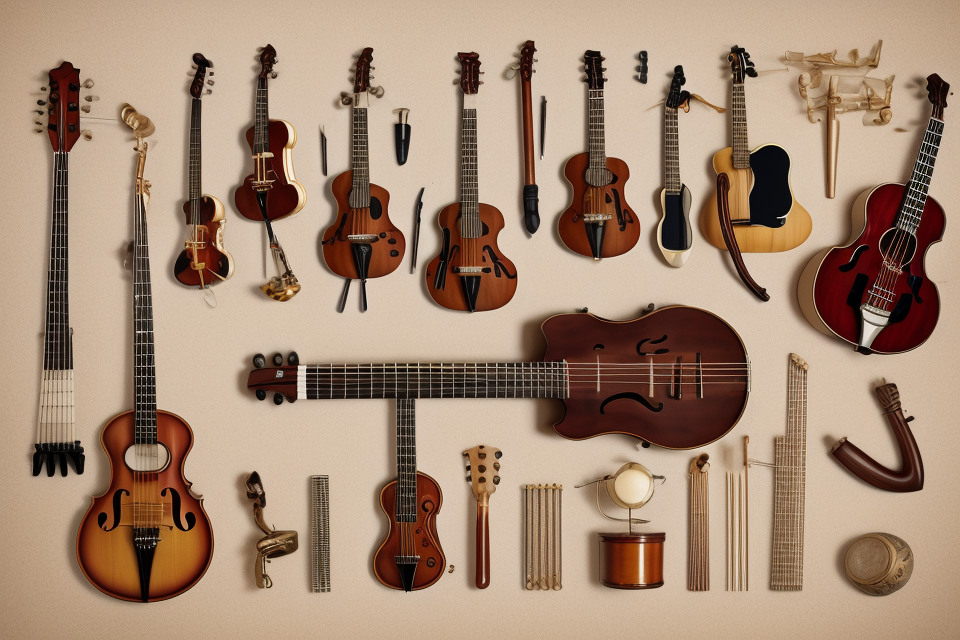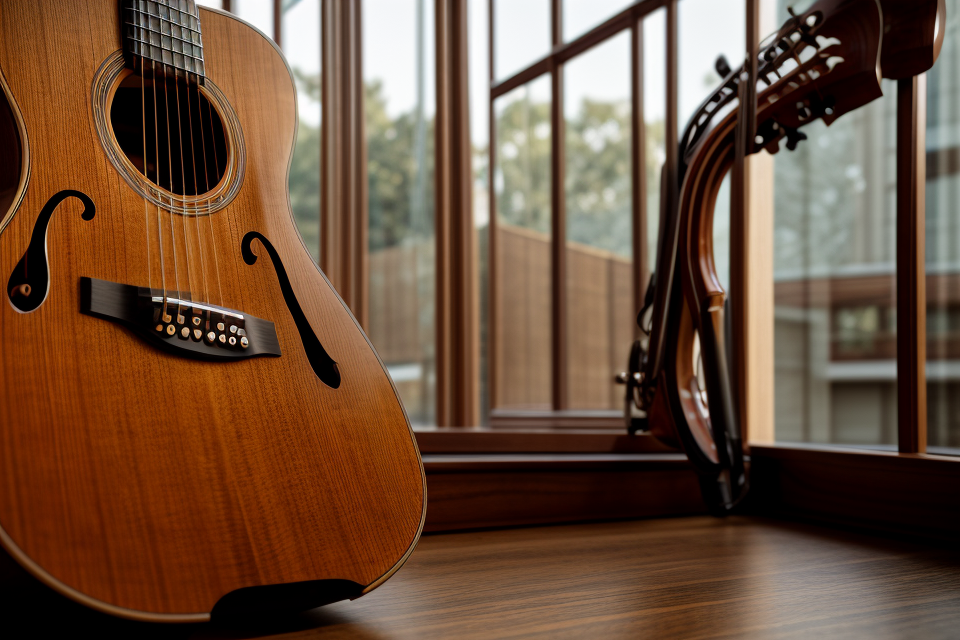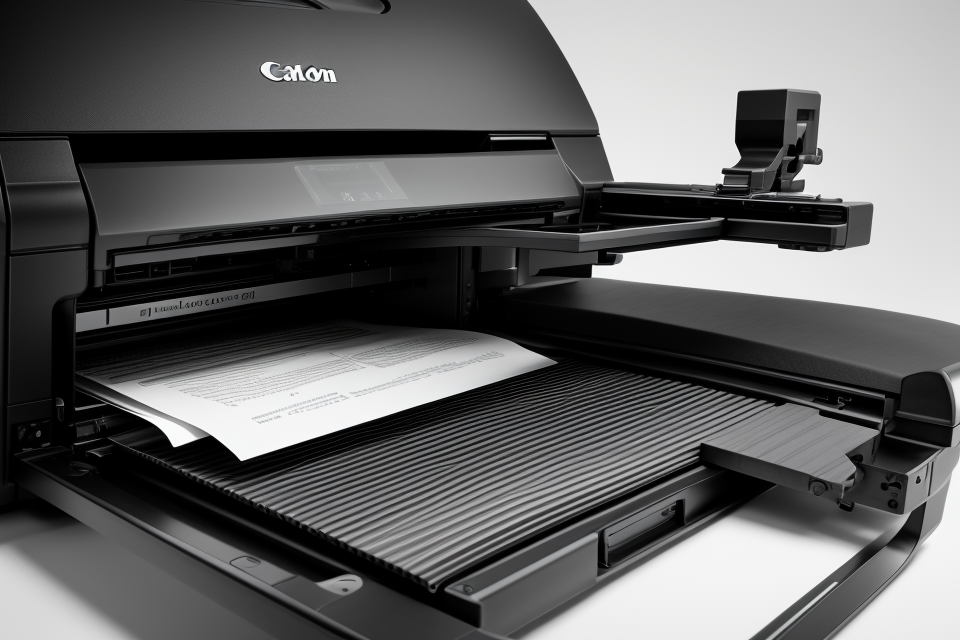An instrument is a tool or device that is used to measure, monitor, or control a physical quantity or phenomenon. Instruments play a crucial role in various fields such as science, engineering, medicine, and music. They are designed to provide accurate and reliable data, enabling researchers, engineers, and professionals to make informed decisions and advance their work.
In this comprehensive guide, we will explore the different types of instruments, their uses, and their significance in various applications. From the simple thermometer to complex scientific equipment, we will delve into the world of instruments and discover how they have shaped our understanding of the world around us. Whether you are a student, researcher, or simply curious about the instruments that make our lives easier, this guide has something for everyone. So, let’s get started and uncover the fascinating world of instruments!
What is Considered an Instrument?
Definition and Examples
Definition
In the realm of music, science, and art, an instrument refers to a device or tool that is designed to produce or manipulate sound, generate a visual display, or serve a specific purpose. The term “instrument” can encompass a wide range of objects, from simple tools like a pencil or a hammer to complex machinery like a musical keyboard or a telescope. In essence, an instrument is any device that serves as an extension of the human body or mind, allowing individuals to achieve tasks that would otherwise be impossible or impractical.
Examples
The world is filled with a diverse array of instruments, each with its unique purpose and characteristics. Here are some examples of different types of instruments:
- Musical instruments: These are devices designed to produce sound, such as pianos, guitars, violins, and drums. They come in various shapes, sizes, and materials, and can be played using different techniques like strumming, plucking, or blowing air.
- Scientific instruments: These are tools used to measure, observe, and analyze various phenomena, such as thermometers, microscopes, telescopes, and spectrometers. They are often designed to provide precise and accurate data, allowing scientists to study and understand the world around us.
- Artistic instruments: These are implements used by artists to create visual art, such as paintbrushes, pencils, charcoal, and sculpting tools. They come in different shapes, sizes, and materials, and can be used to create a wide range of styles and techniques.
- Sporting instruments: These are devices used in various sports, such as tennis rackets, golf clubs, and baseball bats. They are designed to enhance an athlete’s performance and provide a competitive edge.
- Medical instruments: These are tools used by healthcare professionals to diagnose, treat, and care for patients, such as stethoscopes, scalpels, and surgical instruments. They are designed to be precise, durable, and easy to sterilize.
- Electronic instruments: These are devices that use electronic components to generate, manipulate, or amplify sound, such as synthesizers, drum machines, and effects pedals. They often have various controls and settings that allow users to customize their sound.
- Aerophones: These are instruments that produce sound by blowing air into or across a mouthpiece, such as trumpets, saxophones, and flutes. They can produce a wide range of tones and dynamics, and are often used in orchestral and jazz music.
- Idiophones: These are instruments that produce sound by striking, shaking, or scraping their own body, such as bells, maracas, and cymbals. They often have a distinct and resonant sound, and are often used in percussion sections.
- Membranophones: These are instruments that produce sound by vibrating a stretched membrane, such as drums and tambourines. They can produce a wide range of rhythms and textures, and are often used in popular and folk music.
- Chordophones: These are instruments that produce sound by vibrating strings, such as guitars, violins, and cellos. They often have a rich and complex sound, and are often used in classical and
Classifying Instruments
Instruments can be classified in various ways based on their function or purpose. In this section, we will provide an overview of common categories of instruments, including musical instruments, scientific instruments, and measuring instruments.
Musical Instruments
Musical instruments are designed to produce sound. They are often categorized based on their physical characteristics, such as the material they are made of, their size, or the way they are played. Some common categories of musical instruments include string instruments (e.g. violin, guitar), woodwind instruments (e.g. flute, clarinet), brass instruments (e.g. trumpet, trombone), and percussion instruments (e.g. drums, cymbals).
Scientific Instruments
Scientific instruments are used to gather data and make measurements related to various fields of study, such as physics, chemistry, biology, and astronomy. These instruments are often highly specialized and may be used for a specific purpose, such as measuring temperature, pressure, or electrical conductivity. Examples of scientific instruments include thermometers, barometers, microscopes, and telescopes.
Measuring Instruments
Measuring instruments are used to measure various physical quantities, such as length, weight, and volume. These instruments are commonly used in fields such as engineering, construction, and manufacturing. Examples of measuring instruments include rulers, scales, and measuring tape.
In addition to these common categories, there are many other types of instruments that serve specific purposes in various industries and fields of study. Understanding the different types of instruments and their uses is important for professionals in many different fields, as it can help them choose the right tools for their work and understand the results of their measurements and observations.
The Importance of Instruments in Different Fields
Science and Research
Scientific instruments play a crucial role in various fields of science, enabling researchers to make precise measurements, collect data, and test hypotheses. In this section, we will explore the role of instruments in scientific experiments and research, as well as provide examples of scientific instruments and their uses.
Role of Instruments in Scientific Experiments and Research
Instruments are essential in scientific research as they provide a means of gathering accurate and reliable data. They allow researchers to make precise measurements, observe phenomena that are beyond the limits of human perception, and control variables in experiments. Additionally, instruments can help automate and streamline experimental processes, reducing the potential for human error and increasing efficiency.
Examples of Scientific Instruments and Their Uses
There are countless scientific instruments used in various fields of science, each designed for a specific purpose. Here are a few examples:
- Microscopes: Microscopes are used to observe objects that are too small to be seen with the naked eye. There are several types of microscopes, including optical microscopes, electron microscopes, and scanning probe microscopes. Optical microscopes use lenses to magnify images, while electron microscopes use a beam of electrons to create highly detailed images. Scanning probe microscopes are used to study the surface of materials at the nanoscale.
- Telescopes: Telescopes are used to observe celestial objects, such as stars and galaxies. They are designed to gather as much light as possible and to provide a clear, magnified image of the observed object. There are several types of telescopes, including optical telescopes, radio telescopes, and space-based telescopes.
- Binoculars: Binoculars are used to observe distant objects, such as birds or other wildlife. They work by combining the images from two lenses, providing a magnified, stereoscopic image.
- Thermometers: Thermometers are used to measure temperature. There are several types of thermometers, including mercury thermometers, thermocouple thermometers, and infrared thermometers.
- Pipettes: Pipettes are used to dispense precise volumes of liquid. They are commonly used in chemistry and biology labs to measure out reagents and solutions.
These are just a few examples of the many scientific instruments used in research. Each instrument has its own unique purpose and is designed to help researchers gather accurate and reliable data.
Music and Arts
In the realm of music and arts, instruments play a vital role in shaping the sounds and rhythms that captivate audiences and evoke emotions. Musical instruments are tools that enable musicians to create and perform music, and they come in various forms, sizes, and shapes. From stringed instruments like the violin and guitar to percussion instruments like the drum and maracas, each instrument has its unique characteristics and timbre that contributes to the overall musical experience.
The use of instruments in music dates back to ancient civilizations, where people used simple instruments made from natural materials such as bones, shells, and wood. Over time, instruments evolved and became more sophisticated, with the development of new materials and technologies. Today, there are countless types of musical instruments, each with its own history, construction, and playing techniques.
Some of the most common types of musical instruments include woodwinds (such as the flute and clarinet), brass (such as the trumpet and trombone), strings (such as the violin and cello), and percussion (such as the drum and cymbals). Each of these instruments has its own distinct sound and range, and musicians use different techniques to produce different tones and rhythms.
The significance of musical instruments in the arts cannot be overstated. They allow artists to express themselves in unique ways, and they enable audiences to experience a wide range of emotions through sound. Whether it’s the soaring melodies of a violin or the driving rhythms of a drum, instruments have the power to move people in ways that words alone cannot.
Furthermore, the study of musical instruments can provide valuable insights into the history and culture of different societies. By examining the evolution of instruments over time, researchers can gain a better understanding of how music has evolved and how it has been used to communicate ideas and emotions. Additionally, the study of musical instruments can shed light on the social and economic conditions of different eras, as well as the technological advancements that have made modern instruments possible.
In conclusion, musical instruments play a crucial role in the world of music and arts. They allow musicians to create and perform a wide range of sounds and rhythms, and they enable audiences to experience the power of music in unique and profound ways. Whether you’re a musician, an artist, or simply a lover of music, understanding the importance of instruments is essential to appreciating the full breadth of human creativity and expression.
Industrial and Manufacturing Applications
In industrial and manufacturing applications, instruments play a crucial role in ensuring the smooth operation of various processes. From measuring temperature and pressure to monitoring the quality of products, instruments help to optimize production and maintain safety standards. In this section, we will explore the role of instruments in industrial processes and manufacturing, as well as provide examples of industrial instruments and their uses.
Role of Instruments in Industrial Processes and Manufacturing
Instruments are essential in industrial processes and manufacturing as they provide accurate and reliable measurements that help to control and monitor the process. These measurements are used to adjust the process parameters to ensure that the output is consistent and of high quality. For example, in a chemical plant, instruments are used to measure the temperature, pressure, and flow rate of the chemicals being processed. These measurements help to ensure that the chemical reaction is proceeding as expected and that the product is of the desired quality.
Examples of Industrial Instruments and Their Uses
There are many different types of industrial instruments that are used in various manufacturing processes. Some of the most common types of industrial instruments include:
- Temperature Instruments: These instruments are used to measure the temperature of a process or product. Examples include thermocouples, thermistors, and infrared thermometers.
- Pressure Instruments: These instruments are used to measure the pressure of a process or product. Examples include pressure gauges, pressure transducers, and pressure switches.
- Flow Instruments: These instruments are used to measure the flow rate of a fluid. Examples include flow meters, orifice plates, and vortex shedding meters.
- Level Instruments: These instruments are used to measure the level of a liquid or solid in a container. Examples include level transmitters, level switches, and float switches.
- Quality Control Instruments: These instruments are used to monitor the quality of a product. Examples include vision inspection systems, colorimeters, and spectrophotometers.
Overall, industrial instruments play a critical role in ensuring the efficiency and safety of industrial processes and manufacturing. By providing accurate and reliable measurements, these instruments help to optimize production and maintain quality standards.
Selecting the Right Instrument for a Specific Purpose
Factors to Consider
When selecting the right instrument for a specific purpose, there are several factors to consider. These factors will help you make an informed decision and ensure that you choose the best instrument for your needs.
- Determining the specific requirements of the task
The first factor to consider is the specific requirements of the task. This includes the type of data you need to collect, the accuracy required, and any special features that may be necessary. For example, if you need to measure temperature, you will need an instrument that is designed for this purpose and has the necessary accuracy and precision. - Budget and cost considerations
Another important factor to consider is your budget and cost considerations. Some instruments can be expensive, so it is important to determine what you can afford and what instruments are within your price range. You may also want to consider the cost of any additional accessories or equipment that may be required. - User expertise and experience
The user expertise and experience is also an important factor to consider. Some instruments may require specialized training or expertise to use effectively. If you are not experienced with a particular type of instrument, it may be difficult to use it correctly and obtain accurate results. It is important to consider your own level of expertise and experience when selecting an instrument.
By considering these factors, you can ensure that you select the right instrument for your specific purpose. It is important to take the time to carefully evaluate your options and make an informed decision to ensure that you get the best results possible.
Making a Decision
When it comes to selecting the right instrument for a specific purpose, there are several factors to consider. Understanding the decision-making process can help ensure that you make the best choice for your needs.
Overview of the decision-making process
The decision-making process involves several steps, including identifying your needs, researching options, evaluating alternatives, and making a final decision. It is important to take the time to carefully consider each step in order to make an informed decision.
Recommendations for finding the right instrument
Here are some recommendations for finding the right instrument for your needs:
- Identify your needs: Determine what you will be using the instrument for and what specific features you require.
- Research options: Look at different types of instruments and read reviews to get a better understanding of what is available.
- Evaluate alternatives: Consider the pros and cons of each option and how it meets your needs.
- Make a final decision: Choose the instrument that best meets your needs and fits within your budget.
By following these recommendations, you can make an informed decision when selecting the right instrument for your specific purpose.
FAQs
1. What is an instrument?
An instrument is a tool or device that is used to measure, analyze, or control a physical quantity or phenomenon. Instruments can be used in a wide range of fields, including science, engineering, medicine, and music.
2. What are the different types of instruments?
There are many different types of instruments, including mechanical, electrical, electronic, and optical instruments. Mechanical instruments use mechanical parts to perform a function, while electrical instruments use electricity to measure or control a physical quantity. Electronic instruments use electronic components, such as sensors and circuits, to perform a function, and optical instruments use light to measure or analyze a physical quantity.
3. What are some examples of instruments?
Some examples of instruments include thermometers, which are used to measure temperature, spectrophotometers, which are used to measure the absorption or transmission of light, and microscopes, which are used to observe small objects. There are many other types of instruments, such as accelerometers, which are used to measure acceleration, and voltmeters, which are used to measure electric voltage.
4. What is the significance of instruments?
Instruments play a crucial role in many fields, as they allow scientists, engineers, and other professionals to measure, analyze, and control physical quantities and phenomena. Without instruments, it would be difficult to understand and study the world around us. In addition, instruments have many practical applications, such as in the design and manufacture of products, and in the diagnosis and treatment of medical conditions.










